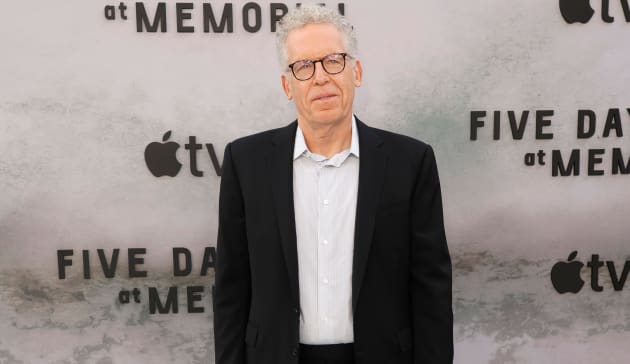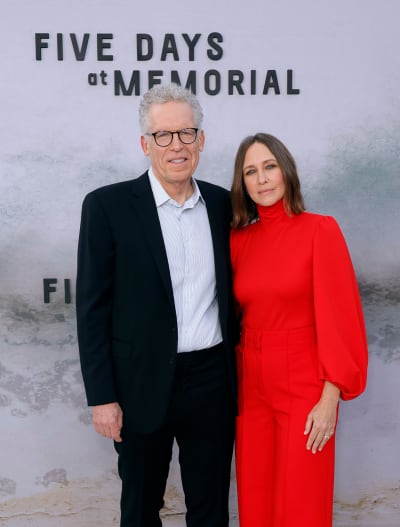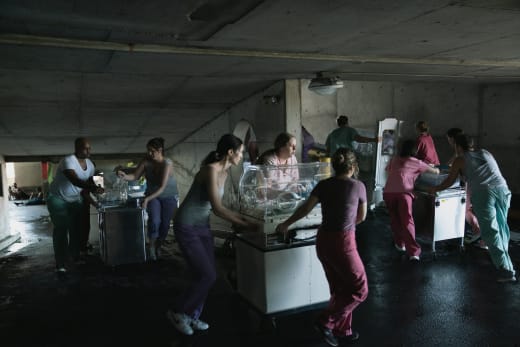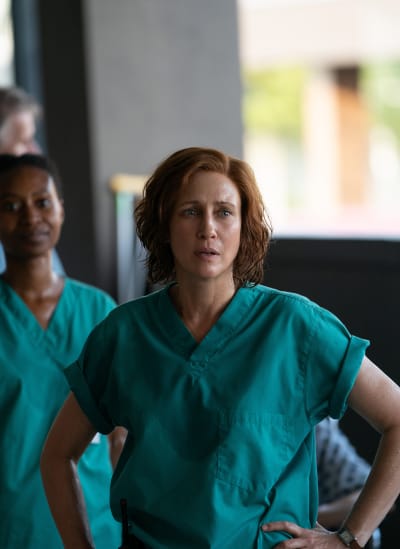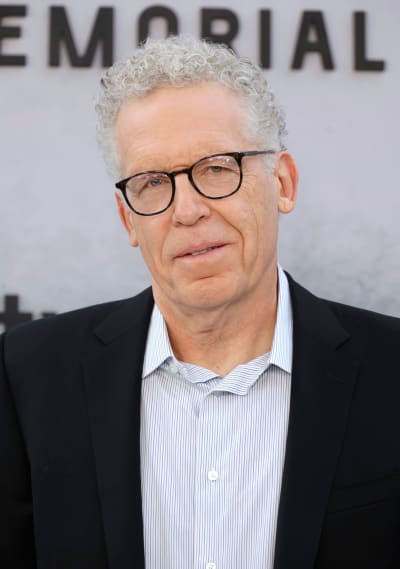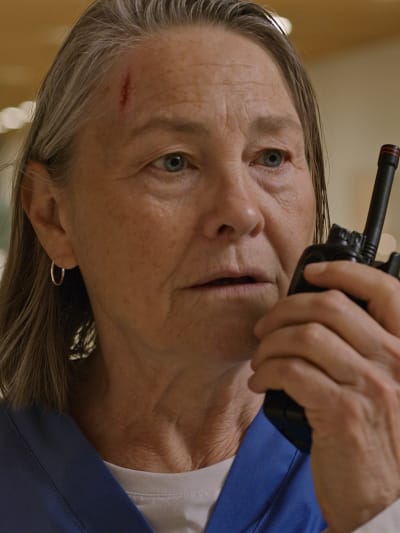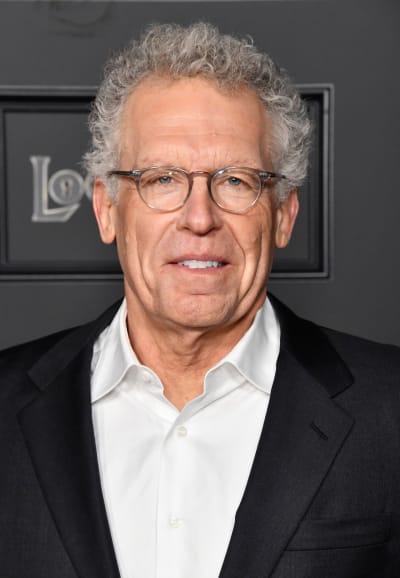Five Days at Memorial dropped three episodes on Apple TV+ today, dropping viewers right into the eye of the storm.
The show examines the horrifying days after Hurricane Katrina when Memorial Hospital was left entirely unprepared for what unfolded, during which caregivers were forced to make unprecedented life or death decisions.
John Ridley and Carlton Cuse brought Sherry Fink’s book by the same name to life, and we chatted with Cuse about his experience making it.
What a huge project you had here.
It was a pretty big project.
You actually managed to take viewers right there. It felt like you were standing in their shoes. What kind of research did you do other than Sheri Fink’s book to make all of that happen?
Well, I think it would be a disservice to Sheri Fink to even say other than Sheri Fink’s book because, for John and I, it was just such an incredible piece of reporting and journalism. I mean, Sheri spent six years working on the book.
She interviewed over 500 people, and it was so complete, so exhaustive, so beautifully written and rendered that for us, that was really all we felt we needed as source material. However, it was supplemented by other stuff Sheri Fink had because, of course, the book was only the tip of the iceberg.
She had done so much research. She had volumes and volumes of photographs, of documents, pictures of what it was like in the hospital, pictures of what it was like when she went to the hospital after they finally drained the water out of the city of New Orleans.
And we used those to design the hospital to show the different levels of degrading that occurred across the five days. She had an exhaustive knowledge of the characters and shared those with the actors. She was just an incredible resource and gave us all the building blocks we needed to create our fictional adaptation of her non-fiction work.
What was the hardest part about bringing the actual disaster effects, the horrible conditions, the flood waters, and that amazing helipad staircase? There are so many moving pieces. How much of it was set to design? How much of it was CGI?
Forty to 54 percent, but I’m not telling you which elements were which. [laughs] No, it was incredibly complicated. We spent months discussing, debating, and working on how to actually put these elements together because, obviously, we couldn’t and didn’t shoot at the real hospital.
We had to create a sense of New Orleans, which was 80% flooded with up to 10 feet of water. And we had to really feel like we were with the characters as they were experiencing the epic scale of this disaster.
So we built a lot of those elements. We built a 4 million gallon water tank that was big enough to drive boats up and down the streets around the hospital.
We constructed a full-scale replica of that helipad and the stairway and, with the combination of practical shooting and visual effects, were able to give you the feeling of what it was like to go up that thing, which was 85 feet above the sixth floor of the parking garage.
And nobody knew if it was going to collapse, and they had to carry unconscious patients and push babies in incubators up to the top of this thing to try to get them rescued.
And we just really wanted to, through the sort of physical actions, really give a sense that the heroism of all the people involved, that these ordinary people had to become heroes and tried to do really amazing, incredible things to help their fellow humans and help save the people in this hospital.
Yeah, I think so many people want to just focus on what happened with Anna and the less successful side, shall we say, of everything that was going on there, but you really brought the heroism to life.
Well, I mean, that was most of it.
You could just see it.
I think for John and I, most of the story was about just the heroism of trying to help people under the most adverse conditions imaginable.
And yes, there were 45 people who ended up dead, and that was a terrible tragedy, and it was a tragedy that needed to be explored, but it wasn’t the entirety of the story of what happened in this hospital.
Absolutely. And I really enjoy the way that you bring the every day into the story. Because it foretells what’s going to happen when the real disaster strikes, such as the hospital’s rampant rumor mill and how that affects the fear unfolding in the hospital and caring for the animals, which we can really see.
You can really see that. How did you determine to put those parts in there to make them as impactful as you did?
Well, those were things that were in Sheri’s book, so I mean, they just seemed like they were so ripe for dramatization in our story. I think the animals in particular.
I mean, I think we all have such a high degree of sensitivity to the suffering of animals and pets. And obviously, it was kind of the decisions that were made there had a lot of resonance in terms of other decisions that were made later in the narrative.
It was tough stuff, but it felt like, “Okay, well, this happened, and we should dramatize it.” And that was what we did.
It’s hard to really break down how you make those decisions, but they really just come out of lots of conversations back and forth between John and me about what were the salient elements of this story that we needed to put on screen.
It worked really well, really well.
Oh, thank you.
And there are so many levels to this story. What was the one that you were most excited to tell?
Well, I think going back to it, I think that even though, in some ways, the focus of the narrative is on the story of, well, how did 45 people end up dead? I think that the heroism of all the other characters is something that really was important and something that we wanted to show.
And I really like Rodney Scott, who’s one of the characters who gets rescued and brought up to the helicopter, and they get him out, and they make the perilous journey to get him up to the top of the helipad.
I mean, that’s a story that I really thought was really great and important. It was very important to see successes like that in a story that was also about people who died. So I think that just as a balancing element, that was really important to me.
And they were left to their own devices, and it was just so sad how this city fell apart like that and let so many people down. And here we are 21 years later, and things really haven’t gotten any better, as we saw with COVID.
And I’m wondering, what do you hope that bringing this story to the screen adds to that conversation?
Well, as John Ridley said to me early on, history rhymes, and that became something that was really resonant as we were making the show during the pandemic.
So here we were, locked down in Toronto — everybody who came into work on the show had to sit in the two-week full isolation quarantine. The restaurants weren’t open. We were all working really hard to stay safe in our production bubble.
And so here we were in the middle of a medical crisis, making a show about people in a medical crisis as a result of a different sort of disaster.
And I think that my hope is that we would learn some lessons about how preparedness is so essential because we don’t want to put healthcare workers in the absolute impossible decision-making process of having to decide who to prioritize when it comes to care or rescue, who gets on a helicopter, who gets a ventilator, who gets a monoclonal antibody, who gets a vaccination.
And those are just impossible decisions, and they’re horrible decisions. And when you realize that they ultimately come down to individuals having to make those choices. I wouldn’t want to have to make those decisions. And I don’t think anybody wants to. And I would hope that we could do better.
I wish I could feel more optimistic about it because we do seem to make the same mistakes over and over again, but I hope it at least provokes some discussions. And if in any way it makes things better, I’ll feel like then it was a win for us in terms of the impact of our show.
Carissa Pavlica is the managing editor and a staff writer and critic for TV Fanatic. She’s a member of the Critic’s Choice Association, enjoys mentoring writers, conversing with cats, and passionately discussing the nuances of television and film with anyone who will listen. Follow her on Twitter and email her here at TV Fanatic.
